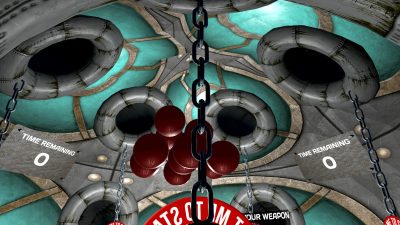
Navigation is one of the most significant design factors in the success of your site. It can determine user experience, conversion rates and search engine ranking – so underestimating its importance can have detrimental consequences.
With research revealing that 50% of visitors use the navigation menu to orientate themselves on a website, there’s no doubt that it will shape your customer’s’ online journey. You must spend time planning your website’s navigation to design the most appropriate layout for your business and ensure you give users a positive experience.
Though there’s lots of ways to get it right, we’ll highlight fundamental mistakes which can make it all go wrong.
Navigation limited to desktop
To have a successful website today, you need to cater for both your desktop and mobile users. With 51.6% of pages loaded on a smartphone or tablet in October 2016, and with mobile internet usage rising, neglecting your mobile users is a fatal mistake. Too often, we see navigation that suits one form factor very well, but the other far less so (typically, it’s a site that works well on a desktop, but not so well on a mobile).
As a result, when mobile users attempt to access the site, the navigation menu fails to function fully. Often becoming distorted, or even requiring users to pinch and zoom creates a displeasing user experience. To avoid this, build a responsive website that is multi-device friendly and can reach your mobile customers.
Making customers work hard
Finding your navigation menu should not be a difficult task for your users. Make it clear and easy to find. Although you should try to stand out from competitors, in the case of navigation, it’s safer and more effective to follow the trend.
Many customers have almost become accustomed to seeing navigation menus in conventional places. Examples of this are noticeable in the widespread use of a hamburger menus in the top left of many websites, or on the right for mobile sites. Consequently, customers expect to find your navigation menu in those places and can sometimes be thrown if they don’t find them there.
That being said, many brands are pushing the boat by presenting navigation menus in unique interactive ways. However, those which are done successfully place it as a central feature on a page or design an enjoyable and interactive navigation structure which catches the eye, whilst still retaining full functionality.
Information overload
Deciding what goes into your navigation menu can be a difficult decision to make, particularly if your business has numerous services and departments. How do you decide what deserves to make the cut?
The sin to avoid is ‘information overload’. Refrain from designing a navigation menu with excessive options and information, as a confused customer is unlikely to make a purchase. Streamline your navigation menu to be concise, informative and easy on the eye.
As it says in its name, its purpose is to help users ‘navigate’ to other pages, so there is no need to showcase everything in the menu. Provide less options, but focus on the core information your customers need. If you’re redesigning your website, utilise Google Analytics data to find out what pages your customers are going to and in what order.
Order
There can be a right or wrong order to place options in your navigation menu. In the same way that stores display products on certain stands, heights and angles to catch the attention of their customers, successful websites have utilised research on user behaviour to create a template that works.
Due to trends and norms, customers will expect to find certain options in particular places. For example, ‘Contact’ is usually the final option on the navigation bar. Whilst some of your options will be individual to your business type, some generic features will be most effective in standard places. Users have become accustomed to finding certain things in a certain order or place and following this can help provide a better user experience.
Inconsistency
You’ve designed a great navigation menu, your customer likes it and is familiar with its format on your homepage. Then, on a subpage you change the format and throw off your user.
The key to great user experience is consistency, whether that’s the tone and design of your web pages or the navigation menus on sub pages. Maintain your brand identity and navigation format across your entire website to make it easier for your customers to use your site. Keep it uniform so that they don’t have to hunt around for something they saw in a menu on a previous page.
Spending time on brand colours, images and tone of voice for your website is incredibly important. However, the aim of your site is to convert and this is done by directing customers to the right pages.
Test and preview multiple options and collate feedback from designers and senior members in the business. Run split tests. If you want the insight of experienced designers, give our web team a call – they can advise you on the most fitting solutions.



